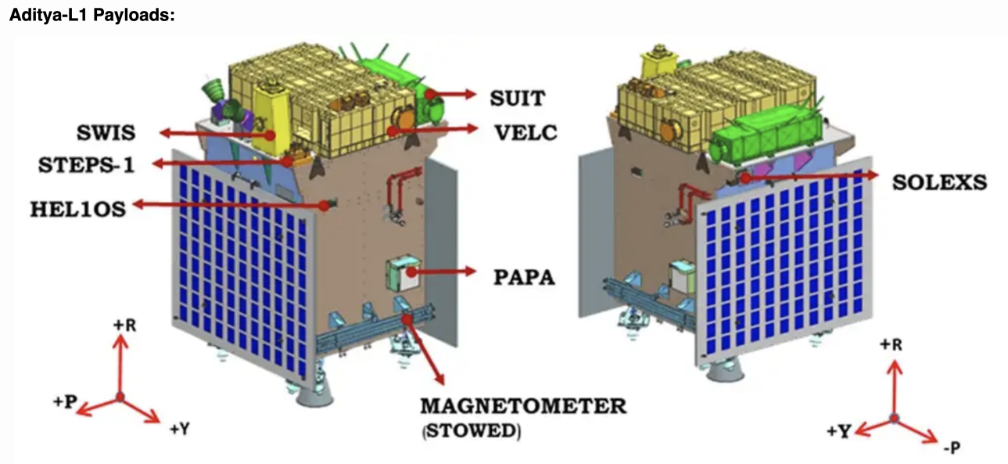
On Saturday, September 2nd, Indian Space Research Organization (ISRO) successfully launched a PSLV-C57 rocket with the Aditya-L1 spacecraft, the first solar space observatory for India.

The liftoff occurred from the Satish Dhawan Space Center in Sriharikota and was the 59th flight for the PSLV rocket and the 25th mission that used the launch vehicle’s XL configuration. The mission required 63 minutes for completion.
The Aditya-L1 was slotted into a highly eccentric, Earth-bound orbit and will now engage in maneuvers that will have the spacecraft reach Lagrange point L1 in approximately 125 days. This was the first time a two-burn, approximately 8 minute sequence of the upper stage had been employed. Once L1 has been reached, Aditya-L1 will have the ability to continuously view the Sun for noting solar activities and there subsequent effects in real-time on space weather conditions.
Also aboard were seven, indigenous payloads…
ASPEX (Aditya Solar wind Particle Experiment) for energetic ions and solar wind studies in combo with PAPA
HEL1OS (High Energy L1 Orbiting X-Ray Spectrometer) In combo with SoLEXS , the Sun’s x-ray flares will be studied over a broad, X-ray, energy range
Magnetometer (MAG) for interplanetary magnetic fields measurement at L1
PAPA (Plasma Analyzer Package for Aditya— see ASPEX)
SoLEXS (Solar Low Energy X-Ray Spectrometer – see HEL1OS)
SUIT (Solar Ultraviolet Imaging Telescope) for solar photosphere and chromosphere exams in near ultraviolet (UV)
VECL (Visible Emission Line Chronograph) for coronal mass ejection studies
